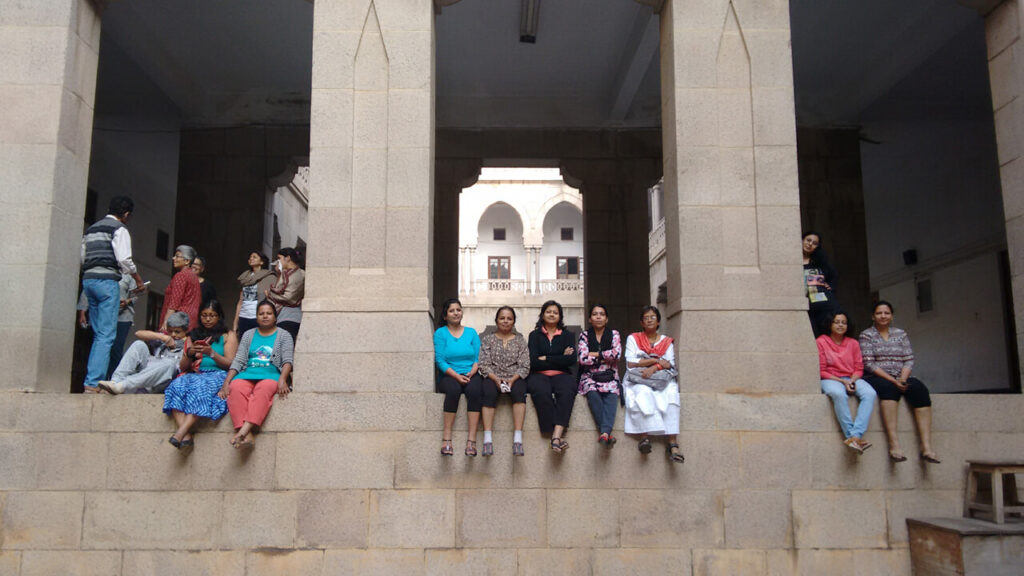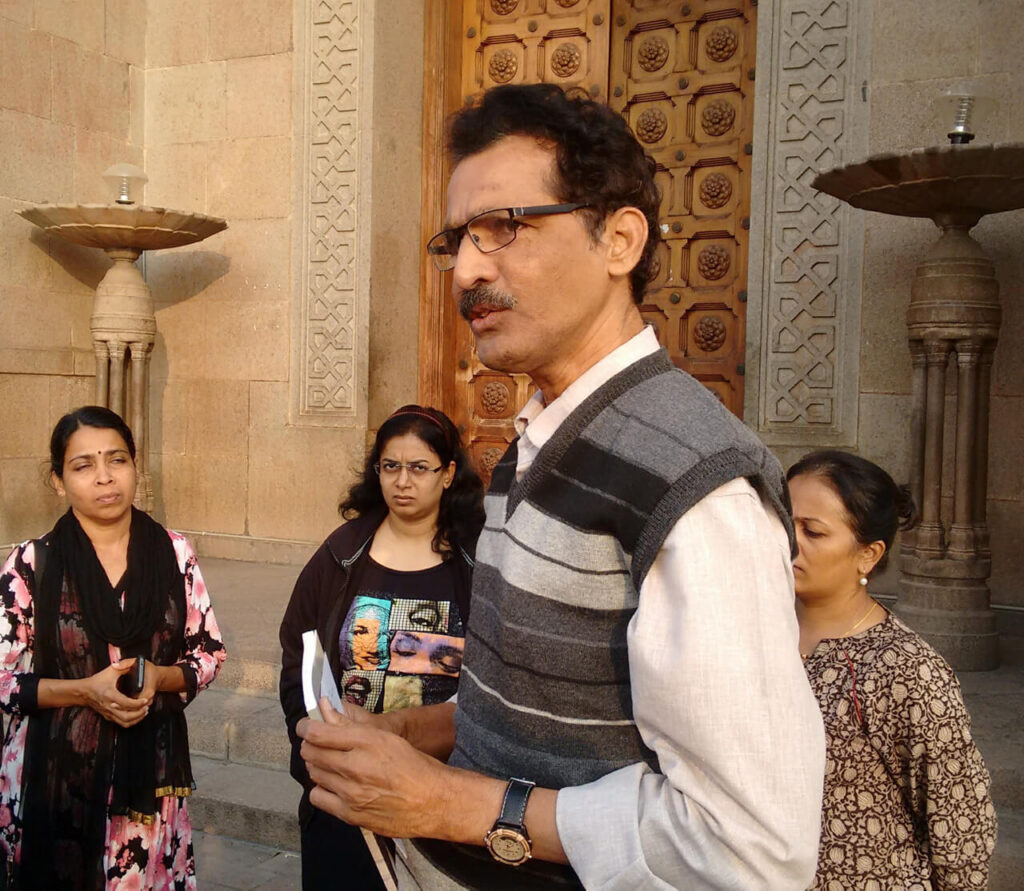SUNDAY, 13 November 2016
Impromptu Early Morning Session: Glimpses into History
As the conference venue was Osmania University and participants were staying in the vicinity of the iconic Arts College building, the local chapter planned a heritage walk through this historic building. Offering a glimpse of the rich history of Hyderabad, N Venugopal Rao, editor of Veekshanam, a Telugu monthly journal of political economy and society, walked the early birds among NWMI members through the building and explained the social history of the university and the imposing edifice to them.

He pointed out the significance of Osmania University, established in 1917 as the second in the native princely states and the first in introducing a local language (Urdu) as the medium of instruction. He also dwelt on the rich history of Hyderabad, which was founded in 1591 as a city of bridges, based on the love between a prince, Muhammad Quli Qutb Shah, and a dancing girl, Bagmati, who took on the name Hyder Mahal, and lent her new name to the city. Of course the Qutub Shahi dynasty was conquered by Mughals and, after a short interregnum, a new dynasty named Asif Jahis came to rule the province. The last and seventh king in this dynasty, who ruled from 1911 to 1948, was Mir Osman Ali Khan and the university was named after him.

Venugopal also explained how the iconic building was conceived by a Belgian architect and built by the local Vaddera community, whose traditional occupation is stone cutting and masonry. He pointed out some of the architectural characteristics of the building and gave an overview of the student movements that grew out of the University over the last eight decades, starting from ‘Hyderabad for Hyderabadis’ agitation in 1935 and the ‘Vandemataram’ movement in 1938 through the protests against the proposal to convert it into a Central Hindi university in 1952, against non-mulkis (non-locals) in 1952, and against the government’s highhandedness in appointing a vice chancellor in 1966, on to the Jai Telangana movement of 1969, radical movements in the 1970s and 1980s, and the recent separate state movement of 2009-14. Participants stood outside the plain wooden door of ‘Room No. 57’, an ordinary classroom that was the hub of virtually all these movements.


